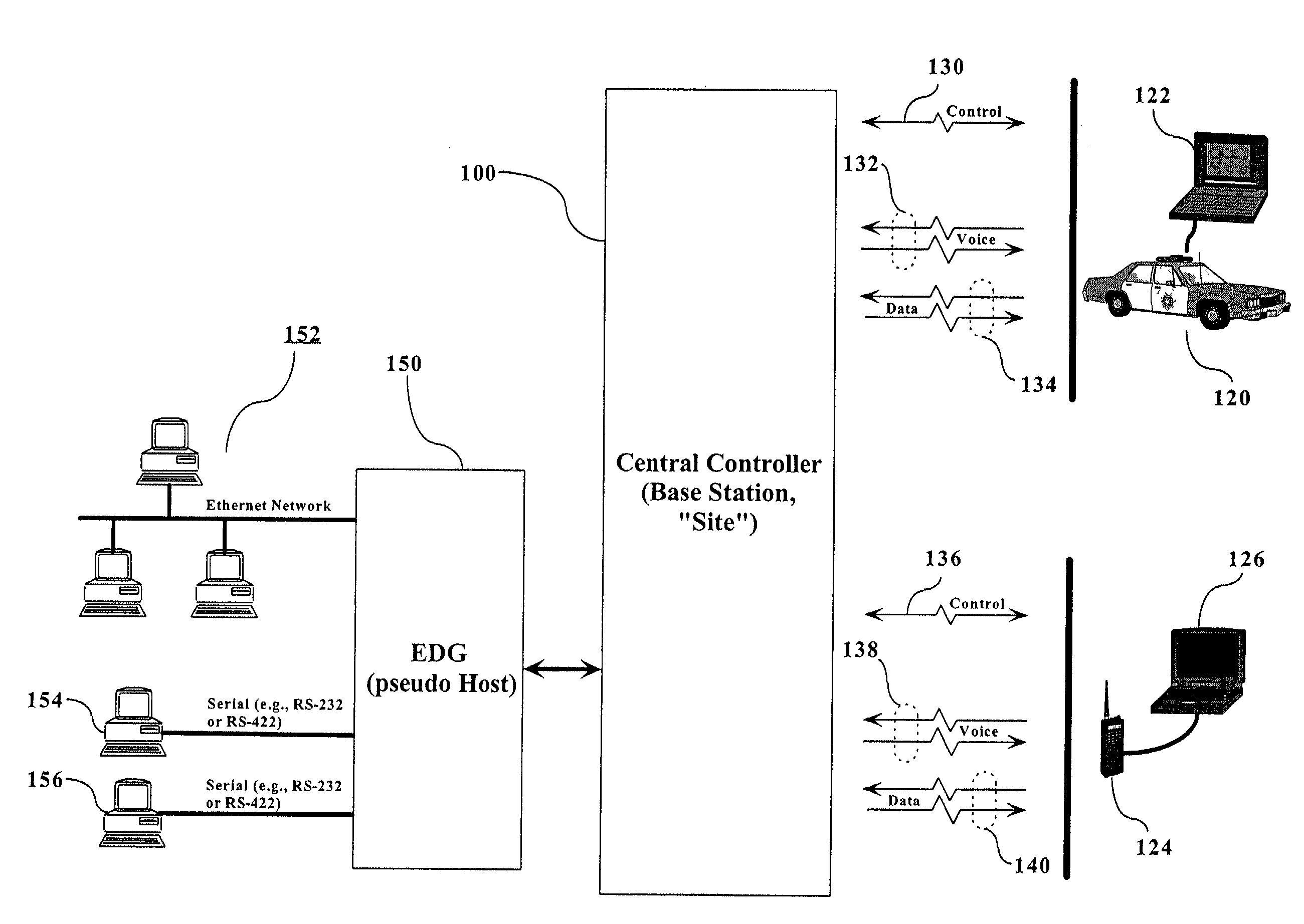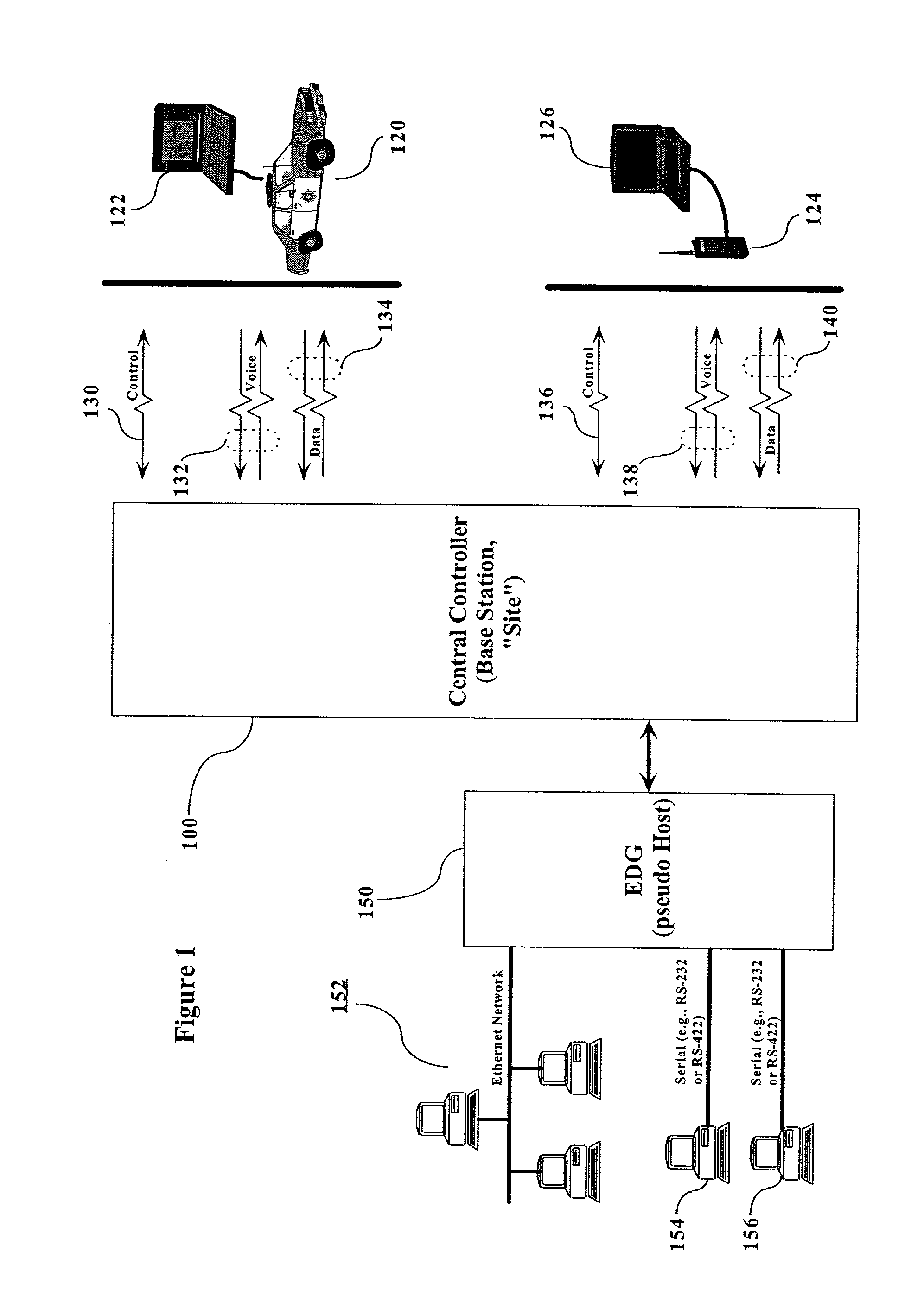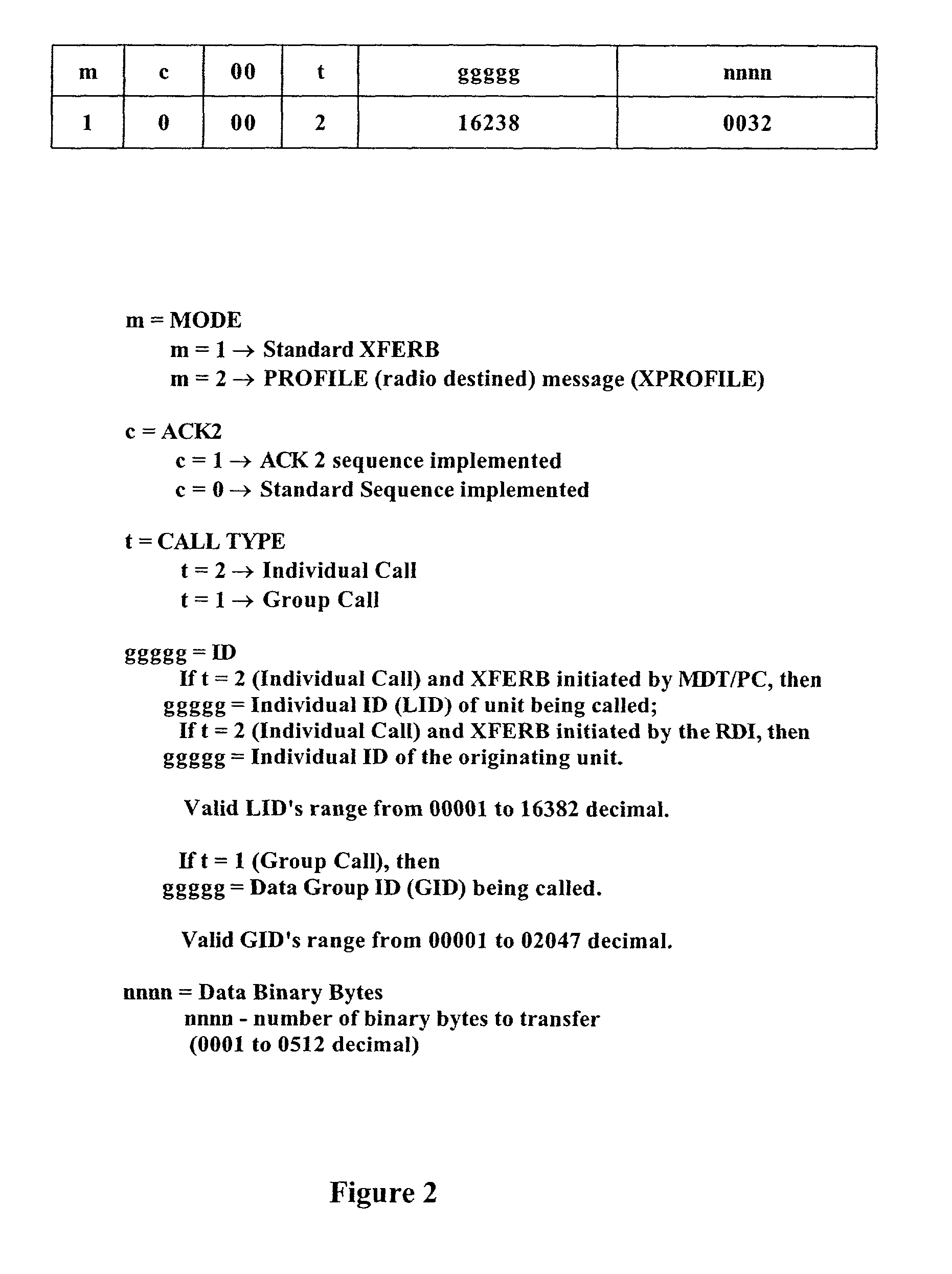Data interface protocol for two-way radio communication systems
a two-way radio communication and data interface technology, applied in the field of two-way radio communication, can solve the problems of limited privacy, difficult use, congested pre-assigned channels, etc., and achieve the effect of extended addressing capability and assured backward compatibility
- Summary
- Abstract
- Description
- Claims
- Application Information
AI Technical Summary
Benefits of technology
Problems solved by technology
Method used
Image
Examples
Embodiment Construction
[0022]FIG. 3 illustrates an example of the structure of a command message in accordance with the present invention. Referring to FIG. 3, the XFERB command used in the EADI protocol of the present invention includes a “mode” field 302, “ACK2” field 304, placeholder field 306, “call type” field 308, “ID” field 310, and “data binary bytes” field 312, similar to the command message of an RDI protocol XFERB command illustrated in FIG. 2. However, in accordance with the present invention, hexadecimal numbers are used in the ID command field (“ggggg”) of the command message. Use of hexadecimal characters in the ID field is referred to herein as “extended addressing” and when used with an MR, provides the MR with what is referred to herein as “EA capability.” For example, in the example of FIG. 3, the five-digit hexadecimal number F112A corresponds to the six-digit decimal number 987434. By using hexadecimal numbering in the existing 5-digit ID field of the command message, up to 1,048,575 ...
PUM
 Login to View More
Login to View More Abstract
Description
Claims
Application Information
 Login to View More
Login to View More - R&D
- Intellectual Property
- Life Sciences
- Materials
- Tech Scout
- Unparalleled Data Quality
- Higher Quality Content
- 60% Fewer Hallucinations
Browse by: Latest US Patents, China's latest patents, Technical Efficacy Thesaurus, Application Domain, Technology Topic, Popular Technical Reports.
© 2025 PatSnap. All rights reserved.Legal|Privacy policy|Modern Slavery Act Transparency Statement|Sitemap|About US| Contact US: help@patsnap.com



